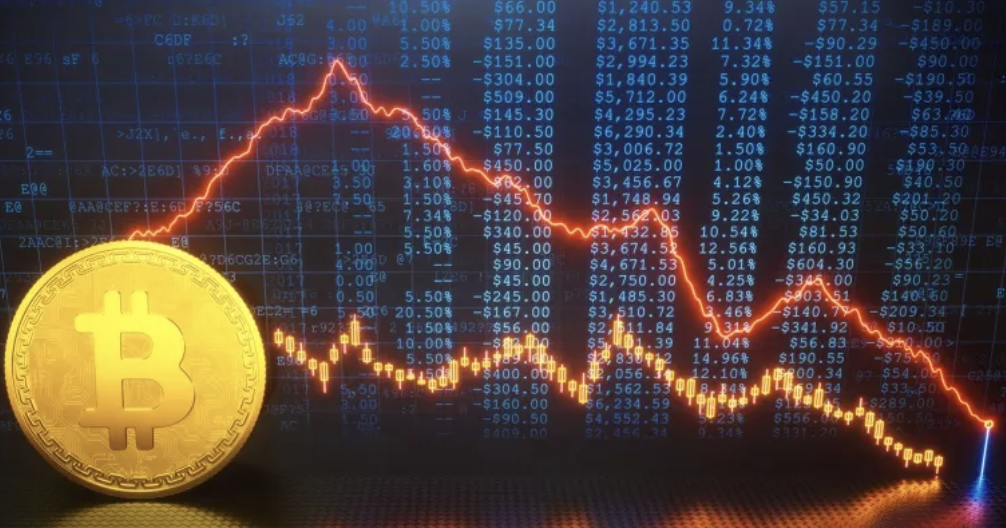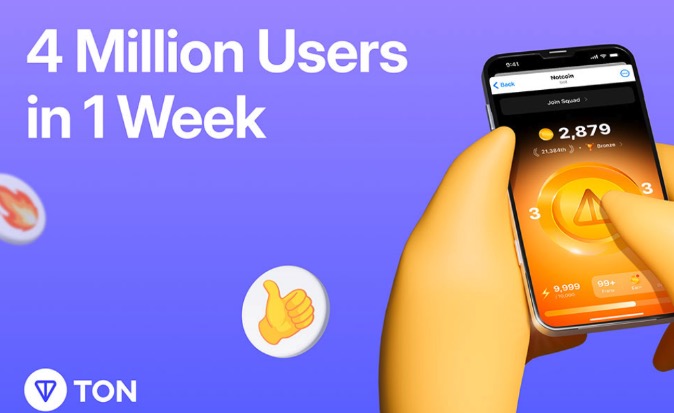
BTC price fluctuates downward, what is the future trend of Web3 market? | TrendX Research Institute
After the downturn in "May" and the "June" slump, the crypto market in July did not see the expected rebound. Instead, negative news such as the German government's sell-off and Mt.Gox repayment intensified investors' panic, leading to a decline in Bitcoin prices and a comprehensive downturn in the entire crypto market. Despite the market's heavy blow, multiple positive factors such as FTX's repayment plan of up to $16 billion, the expectation of interest rate cuts, and the results of the US presidential election have led many to believe that the crypto market may start to turn around in the fourth quarter of 2024.
Current important bearish factors
Mt. Gox compensation triggers market panic: Bitcoin price plunges
The issue of Mt. Gox's compensation has attracted high attention in the market, with the sale pressure of as many as 142,000 BTC and 143,000 BCH causing market panic on June 24, leading to a drop in BTC prices to near $60,000.

With the official start of Mt. Gox's compensation on July 5, BTC broke through the $60,000 support level under heavy selling pressure. During this process, there were signs of surrender from BTC miners. Historical experience indicates that this usually means the price has bottomed out. The last comparable drop in hash rate occurred in 2022, when the trading price of Bitcoin was $17,000.
Andrew Kang, co-founder and partner of Mechanism Capital, believes that most market participants did not realize the severity of the potential decline in the four-month price range of Bitcoin. The closest similar situation we can find is the range in May 2021, when Bitcoin and altcoins also experienced a parabolic rise. The current cryptocurrency leverage is close to historical highs (excluding CME), but in this case, our range time is longer (18 weeks compared to 13 weeks), and extreme washouts have not yet occurred. During the bull market from 2020 to 2021, we experienced several similar situations.
The initially estimated low point of $50,000 may be too conservative, and we may see a more extreme pullback to the $40,000 range. Such a pullback could cause significant damage to the market and may require several months of oscillation/downward trend (recovery period) before a reversal to an upward trend may occur.
German government sell-off: Nearly half cleared
During the early trading session, the German government transferred over 10,000 BTC it held in batches to crypto exchanges and market makers. This action caused the Bitcoin price to briefly drop below $55,000. However, according to Arkham Intelligence's data, during the US stock market closing period (around 01:56 AM Beijing time on Tuesday), the German government address reclaimed 2,898 BTC, equivalent to $163 million, mainly from Coinbase, Kraken, and Bitstamp.

According to Arkham's data, the German government's sell-off plan has completed nearly half. Since the start of the sell-off last month, its Bitcoin holdings have decreased from nearly 50,000 to 27,461, with the current holding value at about $1.5 billion.
Recent industry headlines have focused on the German government's sell-off and the Mt.Gox refund events. Many analysts believe that these are the main reasons for the recent sharp drop in Bitcoin. However, analysts at Bitfinex attribute the decline to normal seasonal weakness.
Despite the market downturn, data released by CoinShares shows that the inflow of digital asset investment products reached $441 million last week. Among them, Bitcoin investment products accounted for the largest share of the total inflow into crypto products ($398 million), accounting for 90%. In terms of regions, the inflow of funds mainly came from the United States, amounting to $384 million. Other high buying volumes came from Hong Kong ($32 million), Switzerland ($24 million), and Canada ($12 million), while the outflow of funds from Germany was $23 million.
Bitcoin mining market is bottoming out
The recent drop in Bitcoin prices to $54,000 (now recovered to $57,000) has made survival even more difficult for miners, who were already experiencing a sharp decline in profits due to the halving. According to surveys, only ASIC miners with an efficiency of over 23W/T can be profitable if the Bitcoin price falls to $54,000, with only a few models of miners barely able to support it.

The selling behavior of miners is also considered to be a partial reason for the price drop. To address the cash flow problem after the halving, mining companies' sell-offs continue, with 30,000 bitcoins from miners entering the market in June alone.
According to F2Pool's data, based on an estimated energy cost of $0.07 per kilowatt-hour, only ASIC miners with a power unit of 26 W/T or lower can be profitable when the Bitcoin price is $54,000. Specifically, models such as Antminer S21 Hydro, Antminer S21, and Avalon A1466I achieve breakeven at $39,581, $43,292, and $48,240, respectively. Other models such as Antminer S19 XP Hydro, Antminer S19 XP, and Whatsminer M56S++ require Bitcoin prices to exceed $51,456, $53,187, and $54,424, respectively, to be profitable.
In this context, as the tide of mining recedes, whether for cash flow reserves or industry migration and exit, mining companies naturally choose to sell Bitcoin to survive.
Fortunately, as Bitcoin prices fall, small and medium-sized mining farms are gradually shutting down, and the Bitcoin mining difficulty is rapidly decreasing, signaling the end of miners' surrender. On July 9, BTC.com data showed that Bitcoin mining difficulty dropped by 5% to 79.5T, with an average hash rate of 586.72EH/s over the past seven days. Since May, the amount of Bitcoin sent by miners to exchanges for sale has significantly decreased, and off-exchange trading volume has also declined. On June 29, all off-exchange trading volume at mining enterprise counters was exhausted, indicating a relief in selling pressure.
Overall, the fluctuation in Bitcoin prices has had a huge impact on miners' survival, but as the market adjusts, miners' selling behavior is gradually decreasing, and the industry may soon reach a new balance.
Positive factors worth paying attention to
FTX repayment plan expected to drive market to new highs
According to the revised restructuring plan and disclosure statement submitted by FTX to the US Bankruptcy Court in Delaware in May, it is expected that the total value of assets collected and converted into cash and available for distribution will be between $14.5 billion and $16.3 billion, exceeding the $11 billion owed to FTX's clients and other non-government creditors. Any excess cash will be used to pay interest to over 2 million clients of the company.
Currently, FTX has obtained court approval, and creditors can choose to vote on the compensation plan in cash or in kind. Creditors must vote by August 16, and Judge Dorsey will decide whether to approve the plan on October 7. Once approved, FTX will repay creditors within two months, expected to be in the fourth quarter of 2024 to the first quarter of 2025.
Although the final method of compensation has not been determined, crypto analyst Ash Crypto believes that since most FTX clients are crypto enthusiasts, this $16 billion fund will enter the crypto market and become a major catalyst for price increases. Bitcoin is expected to break through $120,000, Ethereum will break through $12,000, and other altcoins will rise by 10 to 50 times.
Clear expectations of interest rate cuts
The decisions of the Federal Reserve to raise or lower interest rates are important factors affecting Bitcoin prices, with interest rate cuts usually driving market strength.
Recently, Federal Reserve Chairman Powell stated that inflation pressures in the United States have eased, but the Fed needs more data to prove that the inflation risk has passed before deciding to cut interest rates. If interest rates are cut too early, inflation may rise again; if interest rates are cut too late, it may lead to a slowdown in economic growth, or even trigger an economic recession.
Although Powell stated that the timing of interest rate cuts is not yet determined, with the latest US economic data showing a slowdown in economic growth, such as a significant downward revision in non-farm payrolls in June and an unemployment rate climbing to 4.1%, the highest since November 2021, the market's expectations for interest rate cuts have increased. According to the CME's FedWatch Tool, as of July 9, the market's probability of the Fed cutting interest rates at the September meeting has risen to 73.6%, with a probability of staying put at 22.9%.
Cryptocurrency accounting standards about to take effect
In December last year, the Financial Accounting Standards Board (FASB) announced the first edition of cryptocurrency accounting rules, requiring companies holding Bitcoin or Ethereum to record their value changes at fair value and reflect them in net income. The new rules will take effect for fiscal years beginning after December 15, 2024, and apply to both public and private companies for the 2025 fiscal year.
For cryptocurrency assets, this change in accounting standards means that companies such as MicroStrategy, Tesla, and Block will be able to record the highs and lows of their cryptocurrency holdings. This will further promote the compliance of the crypto market and inject liquidity from the mainstream financial market.
Bitcoin price trends after previous halvings
Market trends are nothing more than three types: upward, downward, and oscillating. Regardless of how the future market changes, it ultimately cannot escape these three patterns. Trying to predict the market's direction is a foolish act; we only need to know how to respond if the market develops in a certain direction.
If the market breaks through the current resistance level and stabilizes above 69,000 points, it can be considered the beginning of an upward trend.
Two possible scenarios for an upward trend:
-
Impacting the previous high but not breaking through: The market may be close to the previous high but unable to break through, or only slightly break through and then fall back. In this case, do not be misled by the market illusion, and do not chase after highs. You don't even need to exit, just reduce some of your positions, especially if you feel that your position is too heavy.
-
Breaking through the previous high and sustaining new highs: If the market breaks through the previous high and sustains new highs for at least 3 days. At this time, pay attention to the strength of the breakthrough, observe whether there is strong buying within 3 days to 1 week, or an oscillating upward trend. If the trend is strong and there is a rapid rise after the breakthrough, you can hold and wait for a large pullback (at least around 10%) before adding to your position. If the trend is not strong, and the rise is slow, it is recommended to reduce your position at the new high to guard against a false breakthrough. Currently, the possibility of continued upward movement is low. If the second scenario occurs and the trend is not strong after the breakthrough, be wary of the risk of a significant decline. Reference to the market trends before and after the previous halvings:
Second halving (2016.07.10)
Before this halving, Bitcoin surged by 78% within a month, and after the halving, there was a deep retracement, with a 30% drop within a week, and the maximum drop even reached 40%. Then it started to rise all the way, from less than $500 to nearly $20,000. After the halving, the price of the coin retraced by 30%.
Third halving (2020.05.12)
In 2020, due to the rare black swan event of March 12, the market saw a significant drop before the halving. If we do not consider this negative factor, Bitcoin also experienced a 20% retracement in the week before the halving. After the halving, there was a rebound, but it did not rise, and the market passed through a period of oscillation. From the high point before the halving in early May, it oscillated until the end of July before breaking through upwards, oscillating for a full 3 months, with two retracements of over 10% in between.
From the previous two halvings, it can be seen that Bitcoin will experience a retracement before and after the halving. Although the market generally expects Bitcoin to rise after the halving, what will happen this time? It may still need further observation.
Follow us at TrendX
TrendX is a leading AI-driven Web3 trend tracking and intelligent trading platform globally, aiming to be the preferred platform for the next billion users entering the Web3 field. By combining multidimensional trend tracking and intelligent trading, TrendX provides a comprehensive experience of project discovery, trend analysis, primary investment, and secondary trading.
Website: https://app.trendx.tech/
Twitter: https://twitter.com/TrendX_tech
Investment carries risks, and the project is for reference only. Please bear the risks on your own.



